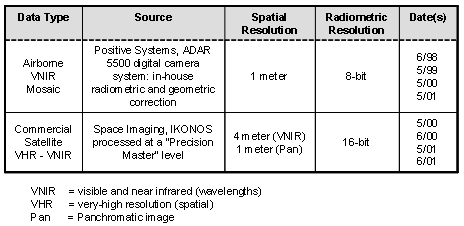|
|
Assessment of image-based habitat quality and habitat change was carried
out at three primary study sites: Mission Trails Regional Park, Poway
East open space area, and Los Penasquitos Canyon Preserve. The climate
of the study region is typical of Mediterranean ecosystems, with an average
annual precipitation of 25 cm and an evaporation rate of 70 cm per year.
Most precipitation occurs in winter.
Mission Trails Regional Park (MTRP) in San Diego, California is one of
the largest regional parks in the nation, incorporating approximately
2200 hectares of sage scrub, chaparral, and grassland habitat. The park
is administrated by the City of San Diego and is roughly 7 km by 10 km.
This park is surrounded by urban fringe and is heavily utilized for recreation.
Terrain ranges from 24 - 485 m in elevation. Levels of recreation intensity
vary throughout the park, and certain areas are designated specifically
for recreation activities. Mechanical disturbances include vegetation
removal and soil compaction from mountain biking, Biking Motocross (BMX),
hiking, and horses .
|
|
|
|
Operational monitoring of southern California habitat reserves requires
moderate to high spatial resolution satellite imagery for large area coverage
and supplementary, site specific very high spatial resolution airborne
imagery for detailed characterization of land cover and change. Two primary
types of imagery were evaluated for monitoring southern California shrubland
habitat: IKONOS multispectral satellite imagery and ADAR 5500 multispectral
airborne imagery.
Data used is summarized in the table below:

|
|
|

